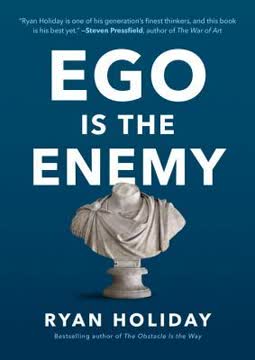重点摘要
1. 掌握暗示的艺术以绕过抵抗
“暗示让你绕过人们的自然抵抗,因为他们似乎只在听取自己内心的声音。”
微妙的建议是强大的。 暗示允许你在不触发防御机制的情况下将想法植入他人心中。通过间接地提出建议,你让目标相信这些想法是他们自己的,从而使他们更容易接受。这种技巧包括:
- 在随意的对话中抛出微妙的暗示
- 使用可以多种方式解释的模糊语言
- 做出“无意”的言论或手势,传达隐藏的意义
- 让沉默和停顿传达大量信息
时机至关重要。 *有效的暗示是在目标放松或分心时进行的。社交聚会、友好的玩笑和共同活动提供了理想的机会,可以不被察觉地插入暗示性评论。
2. 通过激起焦虑和不满来创造需求
“焦虑,一种缺乏和需求的感觉,是所有欲望的前兆。”
利用内心的空虚。 大多数人都有潜在的不安全感和未满足的欲望。通过巧妙地提醒目标他们所缺乏的东西或激起对当前状况的焦虑,你创造了一个你可以填补的需求。技巧包括:
- 暗示错过的机会或未实现的潜力
- 将目标与他人进行不利的比较
- 提醒他们曾经放弃的理想
- 暗示他们当前的生活缺乏兴奋或意义
提供解决方案。 一旦你唤醒了不满,就将自己定位为他们新发现需求的答案。这使目标将你视为他们的救世主,热情地接受你所提供的东西。
3. 作为欲望的对象来增加你的价值
“我们想要别人想要的东西。”
创造一种可欲的氛围。 人们自然会被他人认为有吸引力的东西所吸引。通过显得受欢迎和被追捧,你增加了自己的感知价值,变得更加诱人。策略包括:
- 围绕自己身边有崇拜者
- 暗示过去的征服或关系
- 创造竞争或欲望的三角关系
- 保持神秘和难以接近的气氛
利用社会证明。 当别人似乎渴望你时,这会触发目标的竞争本能。他们会想要拥有别人垂涎的东西,使你的诱惑变得更容易。
4. 发送混合信号以制造兴趣和迷惑
“多种品质的混合暗示深度,即使在困惑中也会引起兴趣。”
成为一个矛盾体。 人类被他们无法轻易分类的事物所吸引。通过展示看似矛盾的品质,你成为一个令人着迷的谜题,别人想要解开。例子包括:
- 将坚韧与温柔结合
- 将纯真与感性混合
- 平衡智慧与自发性
- 在热情参与和冷漠疏远之间交替
让他们猜测。 关键是永远不要完全可预测。当你的目标认为他们已经了解你时,揭示你性格的新方面,令他们惊讶。
5. 选择合适的目标以成功诱惑
“完美的目标具有某种自然吸引你的品质。”
目标选择至关重要。 并不是每个人都同样容易被诱惑。寻找那些:
- 正处于人生的过渡期或脆弱期
- 有未满足的需求或欲望你可以利用
- 拥有真正吸引你或让你感兴趣的品质
- 显示出对当前状况感到无聊或不满的迹象
避免错误的目标。 避开那些:
- 过于满足或自满
- 过于愤世嫉俗或厌倦
- 情感上不可用或封闭
记住,你对目标的真正兴趣将推动你的诱惑努力,使其更具说服力和效果。
6. 通过间接接近创造虚假的安全感
“起初,你的举止中必须没有任何诱惑者的痕迹。”
通过友谊解除武装。 通过首先建立一种无威胁的关系来间接接近你的目标。这降低了他们的防御,并允许你收集有关他们欲望和脆弱性的宝贵信息。策略包括:
- 将自己呈现为朋友或知己
- 对他们的生活和想法表现出真正的兴趣
- 提供支持或帮助而不期望回报
- 通过共同的经历逐渐增加亲密度
耐心是关键。 让关系自然发展,永远不要急于求成或要求超过目标愿意给予的东西。这建立了信任,使你最终的诱惑看起来像是自然的进展,而不是预谋的计划。
7. 进入他们的精神世界以降低防御并获得信任
“按照他们的规则行事,享受他们喜欢的东西,适应他们的情绪。”
成为他们的镜子。 人们天生自恋,容易被反映自己品质的人吸引。通过适应目标的个性、兴趣和价值观,你创造了强大的联系。这包括:
- 模仿他们的沟通风格和肢体语言
- 分享他们的热情并参与他们的爱好
- 认可他们的世界观和意见
- 适应他们的情绪状态和能量水平
逐渐影响。 一旦你完全进入他们的精神世界并获得他们的信任,你可以开始巧妙地塑造他们的想法和欲望。这使你能够在不让他们感到被操纵或施压的情况下引导他们进入你的诱惑。
最后更新日期:
FAQ
What's The Art of Seduction by Robert Greene about?
- Exploration of Seduction: The book delves into the psychology of seduction, presenting it as a powerful form of influence and control. It synthesizes historical examples and literary references to illustrate timeless strategies.
- Character Archetypes: Greene identifies ten archetypal seducers, such as the Siren and the Rake, each embodying different seductive qualities. These serve as models for understanding attraction and manipulation.
- Seductive Maneuvers: The book outlines twenty-four specific maneuvers for seducing others, emphasizing patience, strategy, and emotional manipulation.
Why should I read The Art of Seduction by Robert Greene?
- Understanding Human Nature: The book provides insights into human desires and motivations, revealing how seduction operates on both conscious and unconscious levels.
- Practical Strategies: Greene offers advice applicable in various social situations, enhancing persuasive abilities and social skills in both romantic and professional contexts.
- Historical Context: Rich with historical anecdotes, the book connects timeless principles of seduction to contemporary life, making it relevant for modern readers.
What are the key takeaways of The Art of Seduction by Robert Greene?
- Power of Seduction: Seduction is portrayed as a subtle and effective form of power that can be wielded by anyone to gain influence in relationships.
- Emotional Manipulation: Creating feelings of desire, insecurity, and excitement is crucial for successful seduction, with an emphasis on insinuation and suspense.
- Self-Awareness: Greene stresses the need for self-awareness, encouraging readers to identify their seductive qualities and adapt their approach based on the target's desires.
What are the best quotes from The Art of Seduction by Robert Greene and what do they mean?
- "Seduction is the most subtle, elusive, and effective form of power.": This quote suggests that seduction operates beneath overt power dynamics, allowing influence without force.
- "The ability to delay satisfaction is the ultimate art of seduction.": It highlights the Coquette's strategy of creating desire through absence, intensifying longing.
- "Charm is seduction without sex.": Greene distinguishes charm from sexual seduction, indicating its effectiveness in creating attraction in social and professional contexts.
How does Robert Greene define seduction in The Art of Seduction?
- Seduction as Power: Greene defines it as a subtle, indirect form of power, contrasting with overt control, to achieve desires without confrontation.
- Psychological Manipulation: Seduction involves playing on emotions and desires through charm, attention, and emotional resonance.
- Art and Strategy: It is presented as both an art and a strategy, requiring careful planning and execution, akin to a game mastered with practice.
What are the different types of seducers described in The Art of Seduction by Robert Greene?
- The Siren: Uses allure and sensuality to captivate, embodying femininity and mystery.
- The Rake: Characterized by intense passion and desire, creating excitement and danger.
- The Coquette: Plays hard to get, using warmth and aloofness to heighten desire.
What are the phases of seduction outlined in The Art of Seduction by Robert Greene?
- Phase One: Create Temptation: Awaken desire by hinting at pleasures to come, stimulating curiosity.
- Phase Two: Lead Astray: Keep the target emotionally engaged and confused, creating unpredictability.
- Phase Three: The Precipice: Deepen emotional connection through extreme measures, solidifying the bond.
How can I apply the concepts from The Art of Seduction by Robert Greene in my life?
- Self-Reflection: Identify and enhance your seductive qualities to navigate social interactions effectively.
- Practice Emotional Manipulation: Use strategies to create emotional responses, making others feel special or desired.
- Adapt to Your Audience: Tailor your approach based on individual needs and desires, adjusting behavior to resonate.
What role does absence play in the strategies outlined in The Art of Seduction by Robert Greene?
- Creating Tension: Absence creates tension and longing, making the target yearn for the seducer's return.
- Psychological Manipulation: Induces insecurity and anxiety, prompting the target to pursue more aggressively.
- Reinforcing Desire: Absence reinforces desirability, leading to a more intense emotional connection upon reunion.
How does The Art of Seduction by Robert Greene address the concept of emotional highs and lows?
- Emotional Rollercoaster: Creating highs and lows keeps the target engaged and invested in the relationship.
- Intensity of Experience: Fluctuations intensify the experience, making the climax more rewarding.
- Dependency Creation: Alternating pleasure and pain fosters dependency, strengthening the bond.
What are some common pitfalls to avoid in seduction as outlined in The Art of Seduction by Robert Greene?
- Overexposure: Avoid becoming too familiar or predictable, maintaining mystery and intrigue.
- Neglecting Emotional Dynamics: Manage emotional highs and lows to maintain intensity in the relationship.
- Being Too Nice: Avoid being overly accommodating, as boldness and assertiveness are key to seduction.
How can one maintain the seductive atmosphere after the initial seduction according to The Art of Seduction by Robert Greene?
- Continuous Re-seduction: Introduce new experiences and surprises to prevent familiarity from dulling the relationship.
- Injecting Drama: Create tension or conflict to reignite the initial spark and keep the relationship dynamic.
- Avoiding Complacency: Engage the target's emotions and desires continually to preserve and enhance the seductive atmosphere.
评论
《诱惑的艺术》评价不一,有人称赞其历史轶事和心理见解,也有人批评其操纵手段。读者欣赏书中对诱惑技巧的全面分析及其在浪漫关系之外的应用。许多人认为这本书既有趣又发人深省,认为它在理解人类行为方面很有用。然而,批评者认为这本书提倡不道德的操纵和物化。一些读者觉得书的篇幅过长且内容重复,而另一些人则认为它是个人成长和社会动态的宝贵资源。
Similar Books























